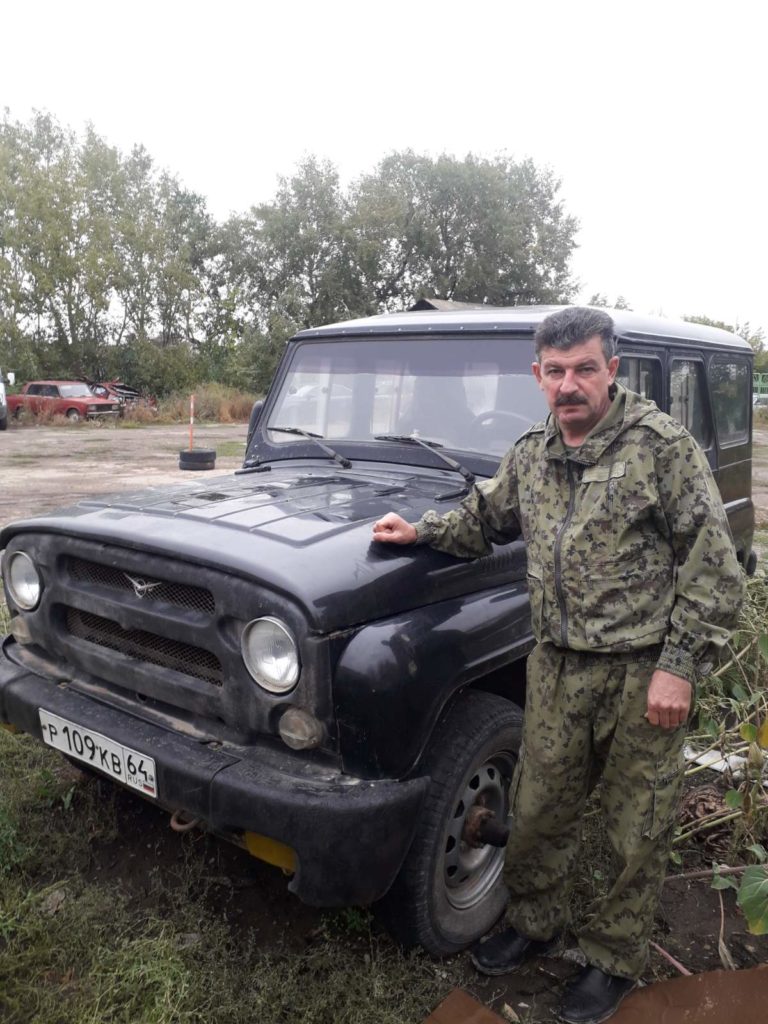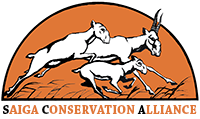After sad and nervous 2020 marked with COVID during which Saiga Conservation Alliance like many other entities had to cut down its activities it was especially pleasant to be able to resume grants competitions in 2021.
The reaction was quite fruitful – we’ve got quite a few applications for all three competitions we held – Small Grants Programme, Young Conservation Leaders, and Excellence in Saiga Protection.
Here we present the winners and allow them to tell some words about their projects and/or conservation work in general.
Small Grants Programme
Karina Karenina, Russia, project “Socially Significant Areas in the Saiga Habitat Territory of the North-West Caspian Region”:
In the perfect world, the best way to save critically endangered saiga antelopes would be to keep all the suitable saiga habitats intact and protected from any human disturbance. In reality, we can rely only on the relatively small restricted territories protected as nature reserves and sanctuaries. Thus, it is crucial to choose the right locations to use our limited conservation possibilities with maximum efficiency. Our project is focused on the investigation of some specific aspects of saiga social behavior. We aim to reveal and describe key areas of the habitat in terms of social interactions, so-called ‘social hot spots’. As we know from the studies on other species, many mammals rely on specific locations to gather and socialize. These locations are usually associated with distinctive features in the landscape attracting different groups and providing optimal conditions for intergroup interactions. In the present project, we plan to record the behavior of saigas inhabiting Stepnoi Reserve in Astrakhan Oblast, Russia. Analyzing our behavioral observations, data from camera traps, and reports from the rangers we will look for the most important areas for saiga survival and reproduction. We hope that the obtained information will be used to improve the effectiveness of saiga conservation initiatives. Knowing the characteristics of social hot spots can be used for more targeted saiga habitat protection. It’s an honor to receive the award from Saiga Conservation Alliance and I want to use it to help saiga conservation as much as I can.
All photos provided by Karina Karenina and Andrey Gilev.
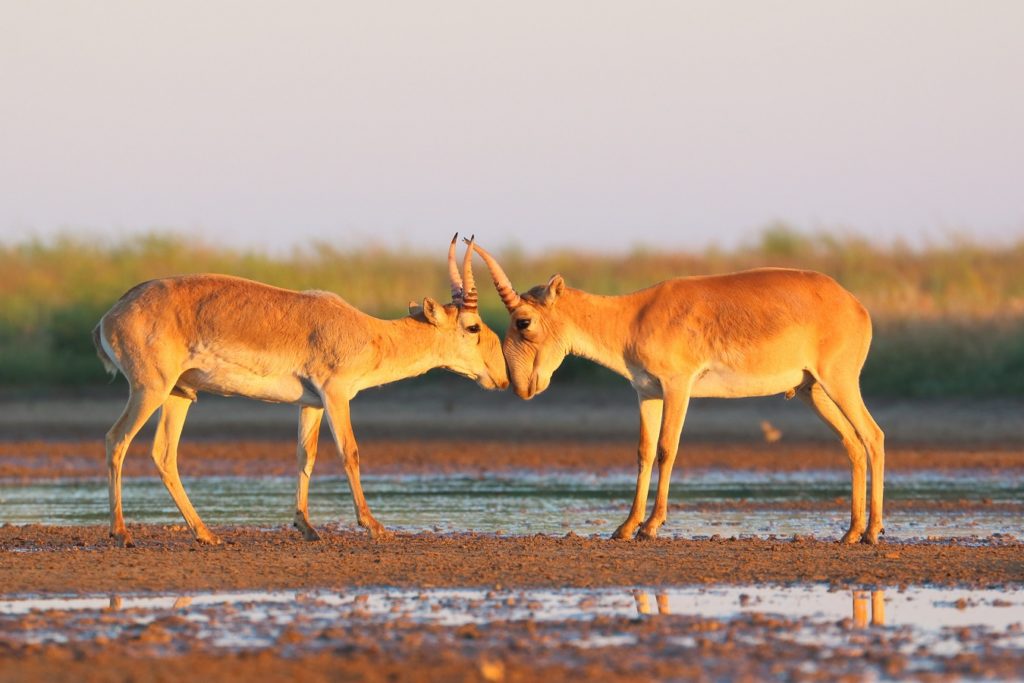
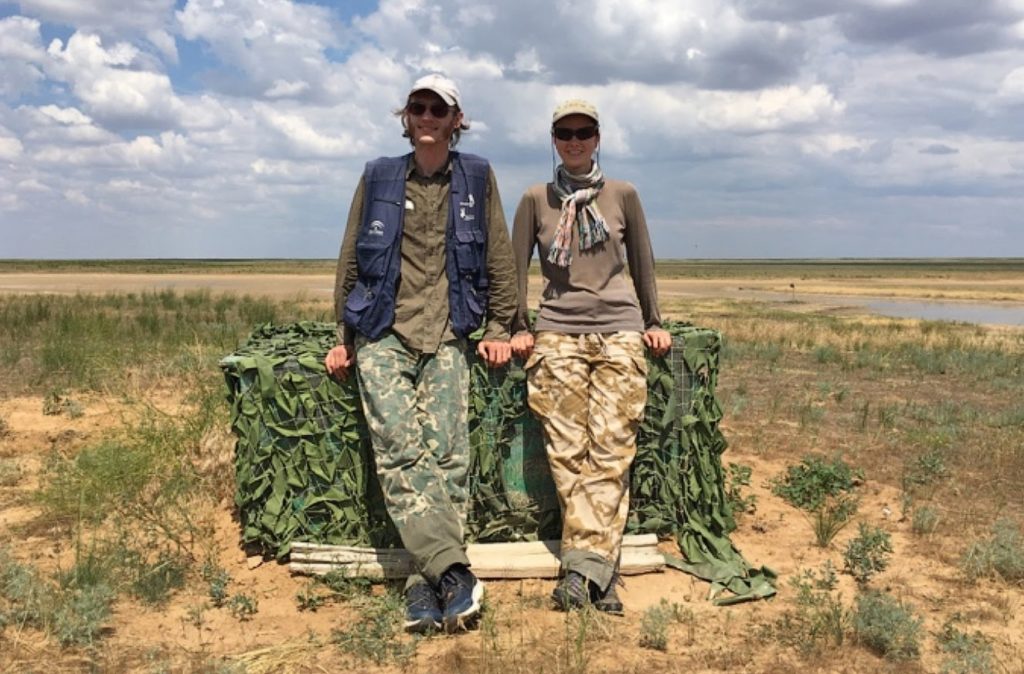
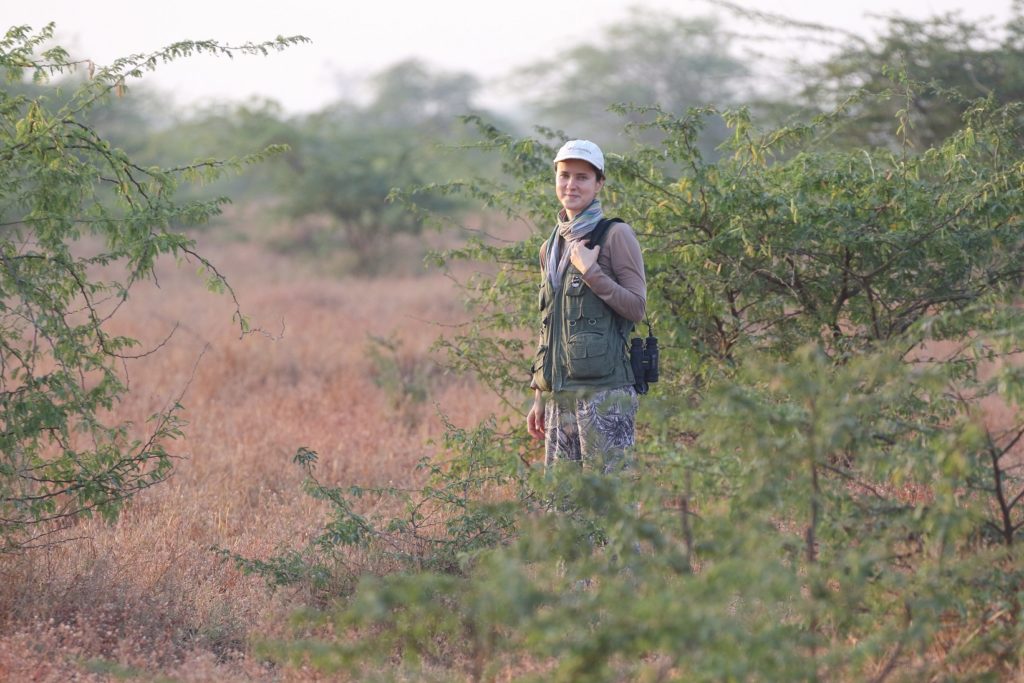

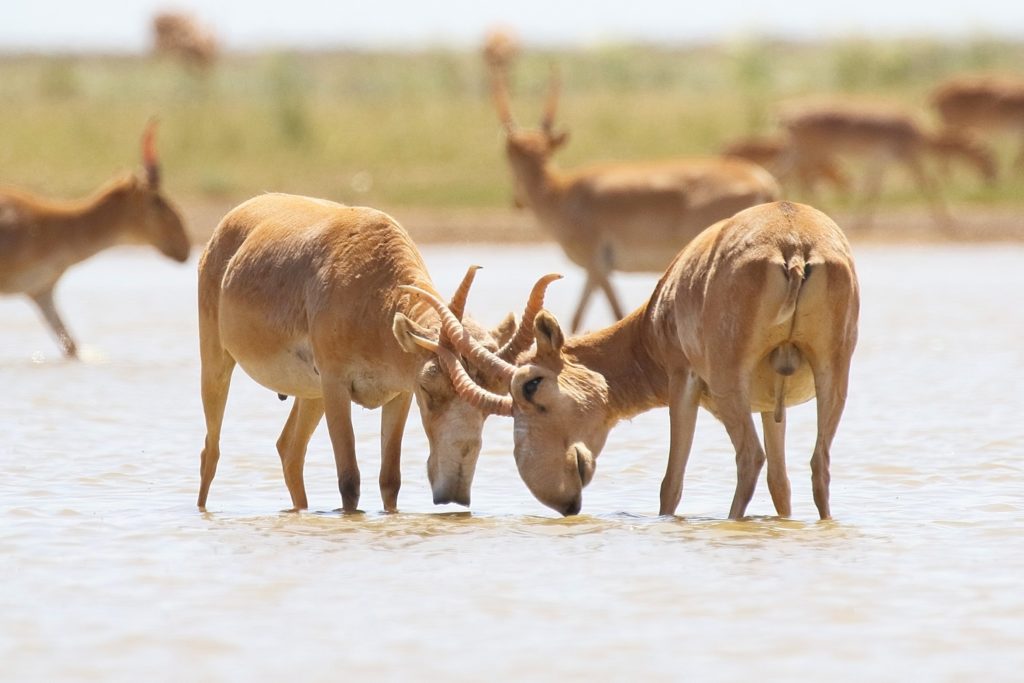
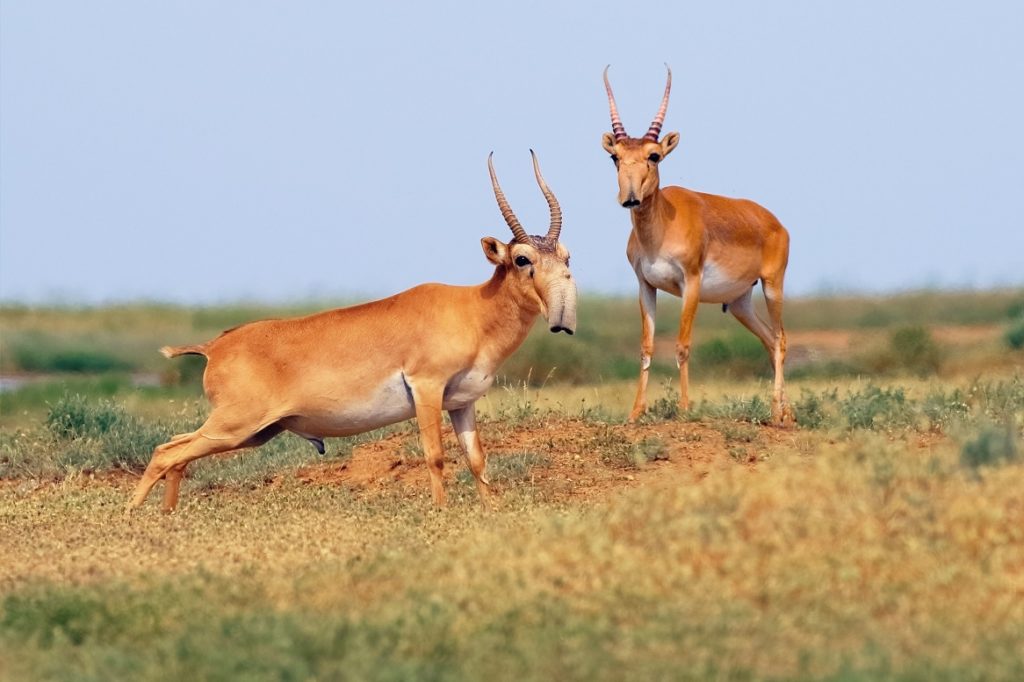
Mikhail Shpigelman, Kazakhstan, project “Friendly neighborhood with steppe antelope”:
I am very grateful to the Alliance for the grant provided. This grant is very important for me, as it will allow me to do an important job in the conservation of the unique steppe antelope. Saiga conservation is not possible without preserving its biotope. Therefore, it is important to study the territory where it lives. The steppe as a biocenosis has an important characteristic – productivity, which decreases every year due to anthropogenic impact (mainly overgrazing of agricultural animals). Within the framework of the project, we want to study the productivity of the steppe, the number of agricultural crops on the transect where animals migrate throughout the year in this territory, and the number of saigas submitted by the gaming agencies. This information will show whether there is a reserve for increasing the saiga population, as well as help to develop recommendations for resolving the conflict between farmers and saigas. I would like to note that saiga is a key species in the steppe ecosystem. By protecting it and its biotope, we contribute to the preservation and increase of the population of other animals also associated with the steppe biotope. As you know, the steppe is the most vulnerable ecosystem and the most severely affected by human impact. During our expeditions, in late autumn, we observed up to 40 white-tailed eagles near the saigas. The white-tailed eagle is a rare species listed in the Red Book; after the nesting period, the eagle becomes a polyphagous eagle, therefore weak, sick, and dead animals become its prey. Thus, an increase in the saiga population contributes to an increase in the population of other animals. In addition to the white-tailed eagle, in this area, there are rare bird species listed in the Red Book, such as steppe eagles and burial grounds.
All photos provided by Mikhail Shpigelman.
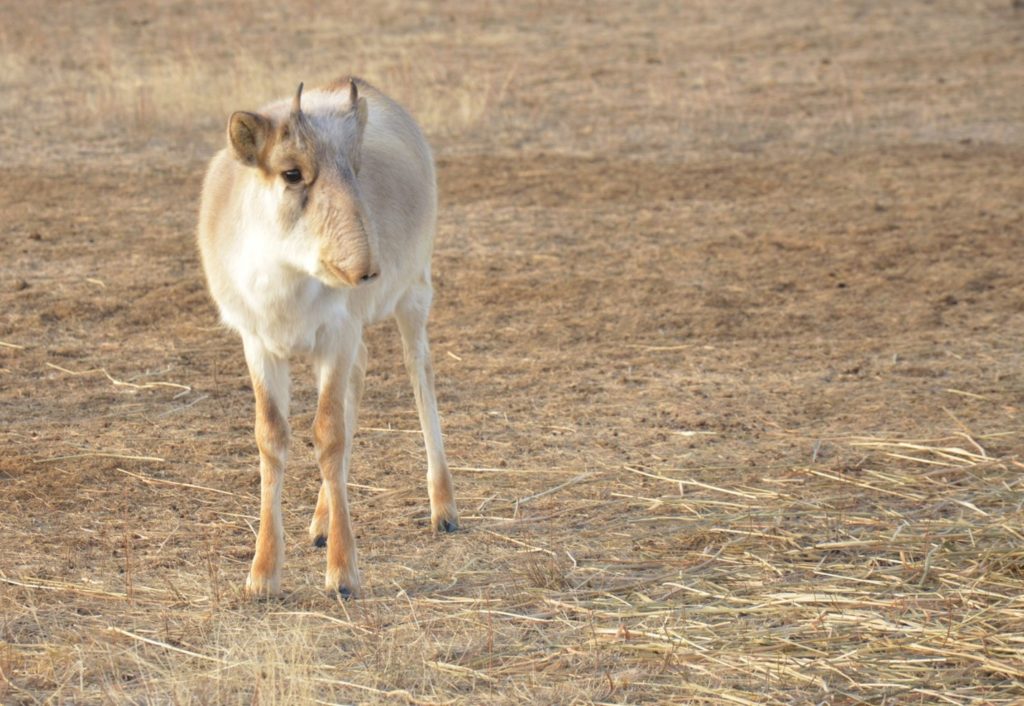
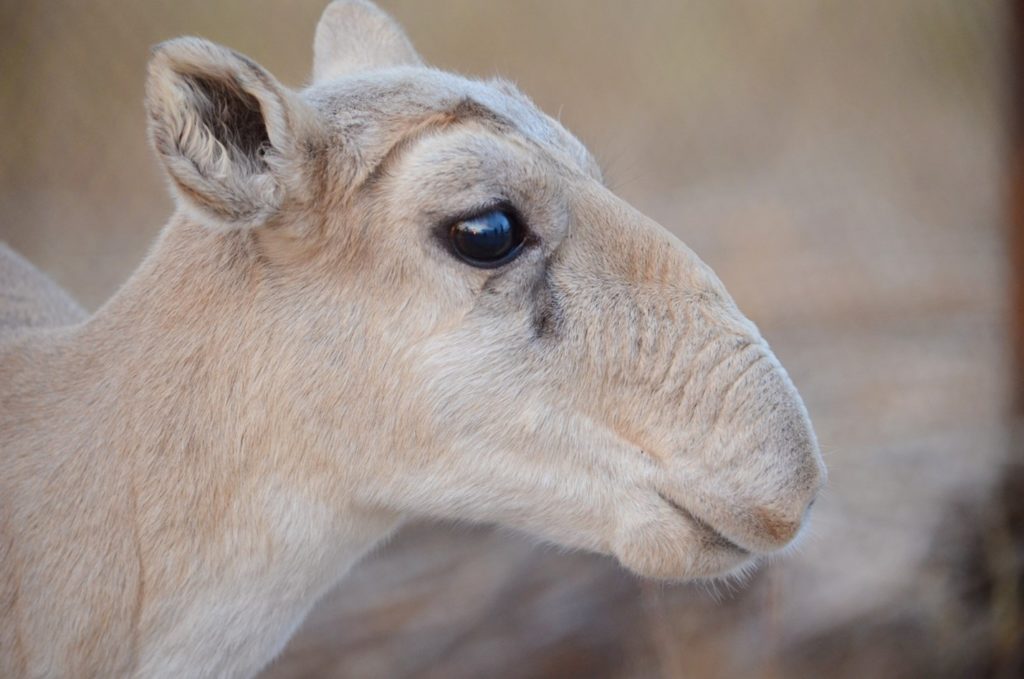
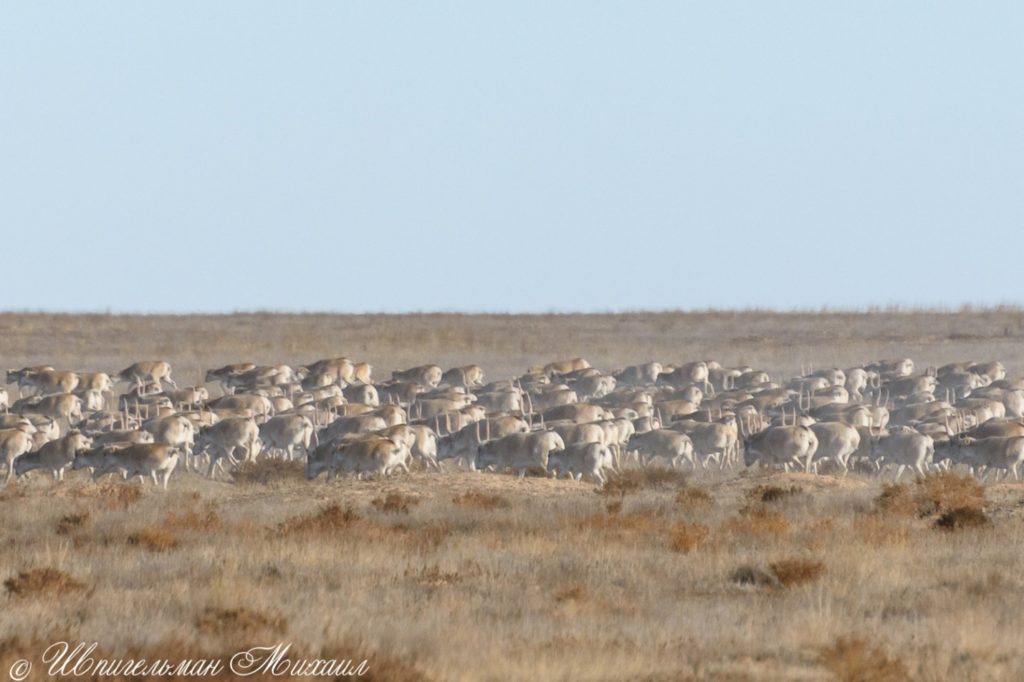
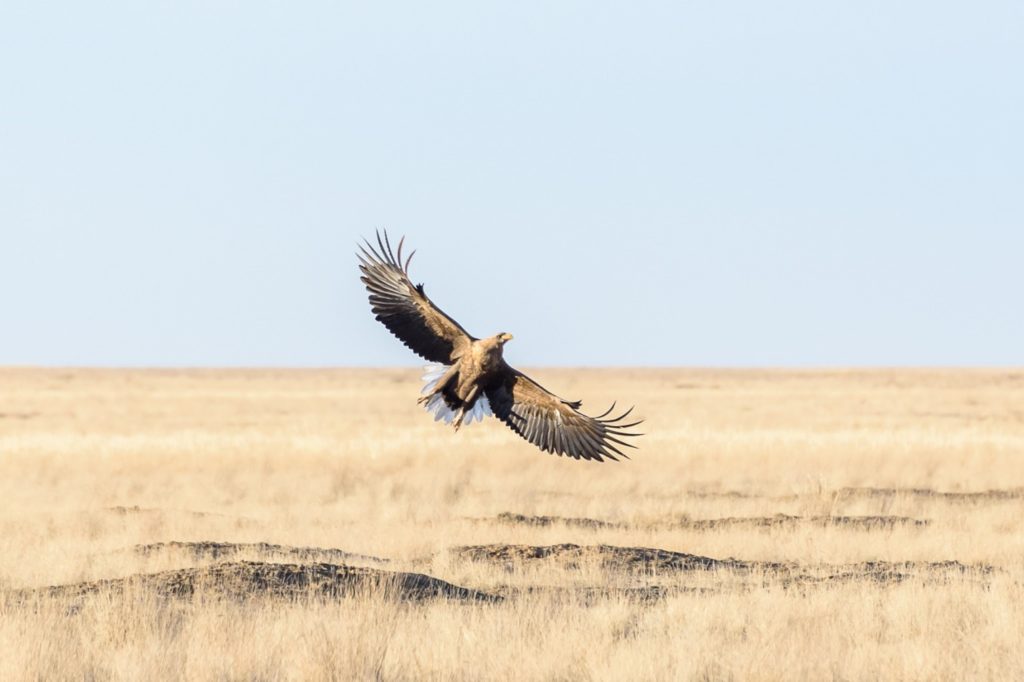
Svetlana Aitkulova, Russia, project: “Development of a monitoring system for migratory saiga herds on the territory of the Lake Elton Biosphere Reserve”:
The project is aimed at the development of the material and technical equipment of the State Entity “Natural Park “Eltonski” and introduction into practice of modern non-invasive observation methods (remote sensing cameras), which are successfully used in other protected areas. The relevance and practical significance of the project activities are due to the importance of the role of the project territory (Biosphere Reserve “Lake Elton”) in maintaining migratory herds of the Volga-Ural saiga population, including the species in the Red Books of the Russian Federation and the Volgograd Region, forming a regional system for its monitoring and registration on the basis of this institution, and the structure of migratory stocks, key habitats, and sites in and around the project area.
All photos provided by Svetlana Aitkulova.

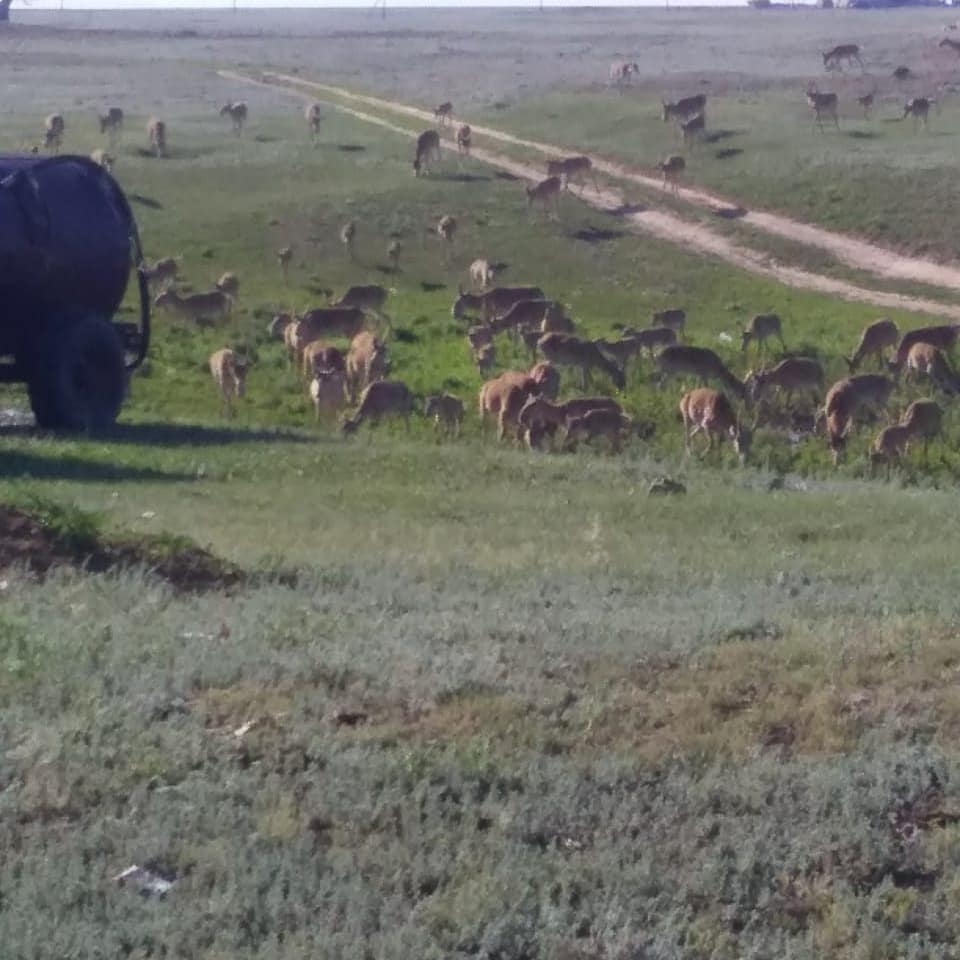
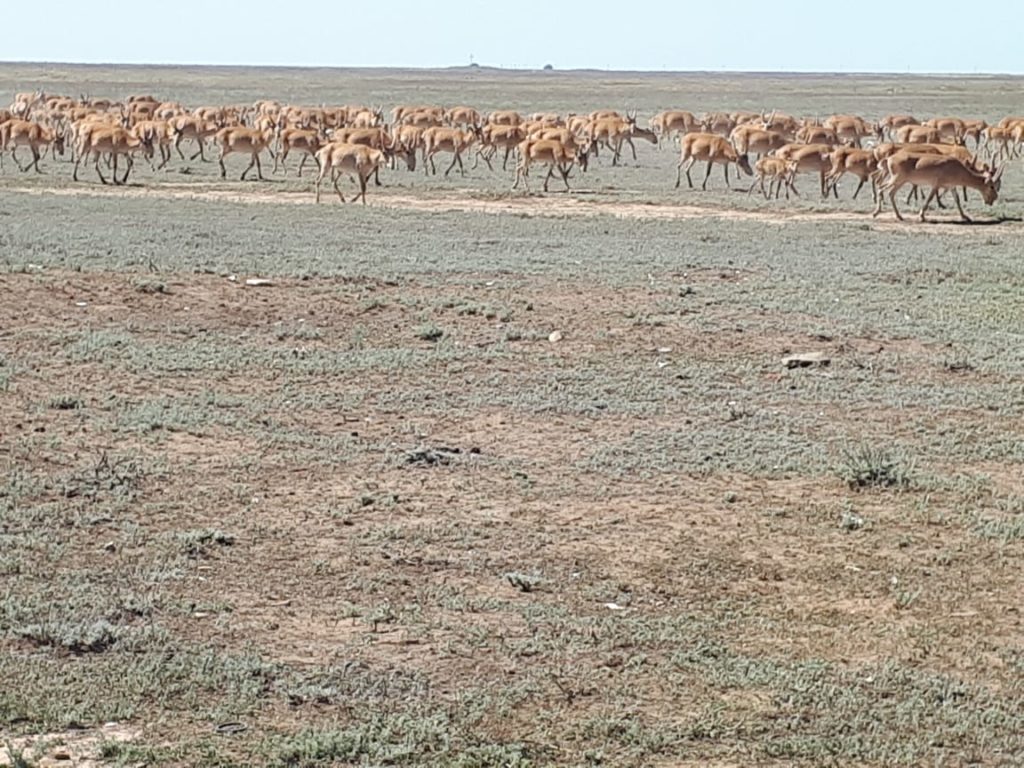
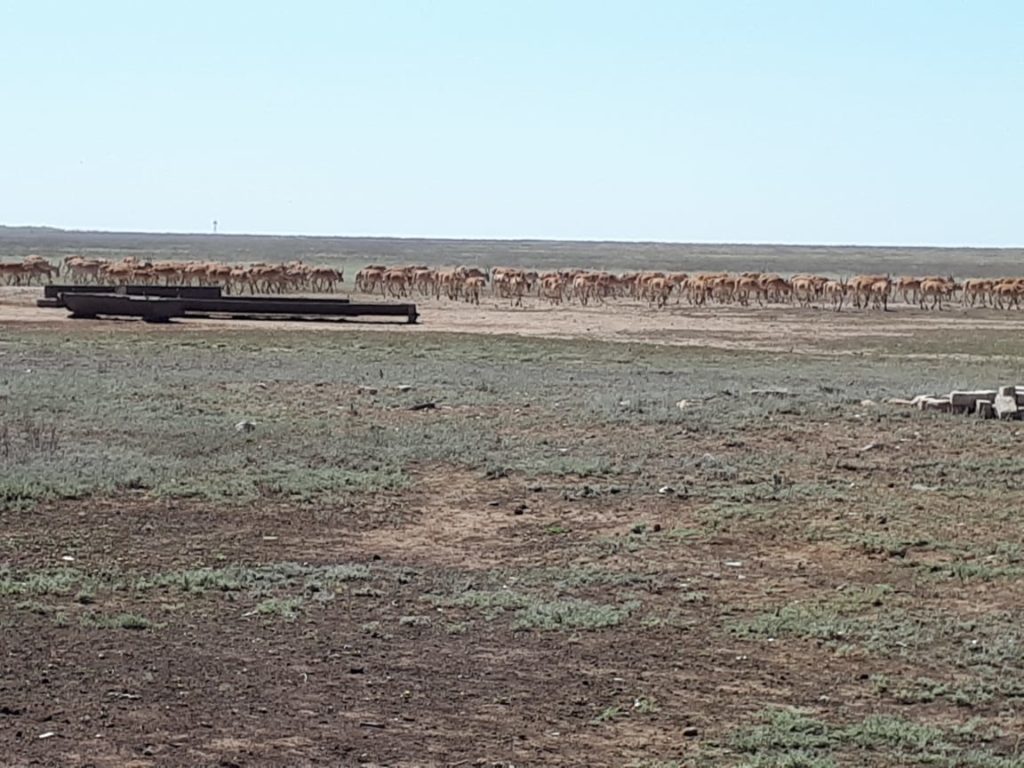
Young Conservation Leaders
Dilnaz Malikova, Kazakhstan:
Due to world pandemic pupils over the world are facing difficulties of study, but I would like to use this situation to increase their knowledge about critically endangered antelope of the Kazakh steppe. Saiga Conservation Alliance gave me a great chance to implement my idea on the development of an online course for pupils about the importance of saiga conservation. During the SCA award, my work will be focused on the creation of an online course for pupils, that includes information about the saiga number, habitat, limiting factors, migration ways, and biology which will be presented in a very interesting way for kids. Accordingly, my work is aimed at awareness-raising and promotion of educational programs for pupils of Karaganda oblast and Kazakhstan. I plan to create the course in the Russian language as most of the saiga countries (Russia, Kazakhstan, and Uzbekistan) speak Russian fluently. With the support of the SCA team, I can expand my project scope to other countries and the impact can become more sensible. Unfortunately, my work is not able to give short-term results on saiga conservation or actions on combating poachers, but educational programs for kids are very important actions to prevent future poaching activities, fundamental knowledge about the saiga antelope for future decision-makers, and create a better environment for saiga antelope. I think that during the project I can create an important product to promote saiga conservation among the children with the possible influence of children on parents for more action to conserve wildlife.
Photo provided by Dilnaz Malikova.
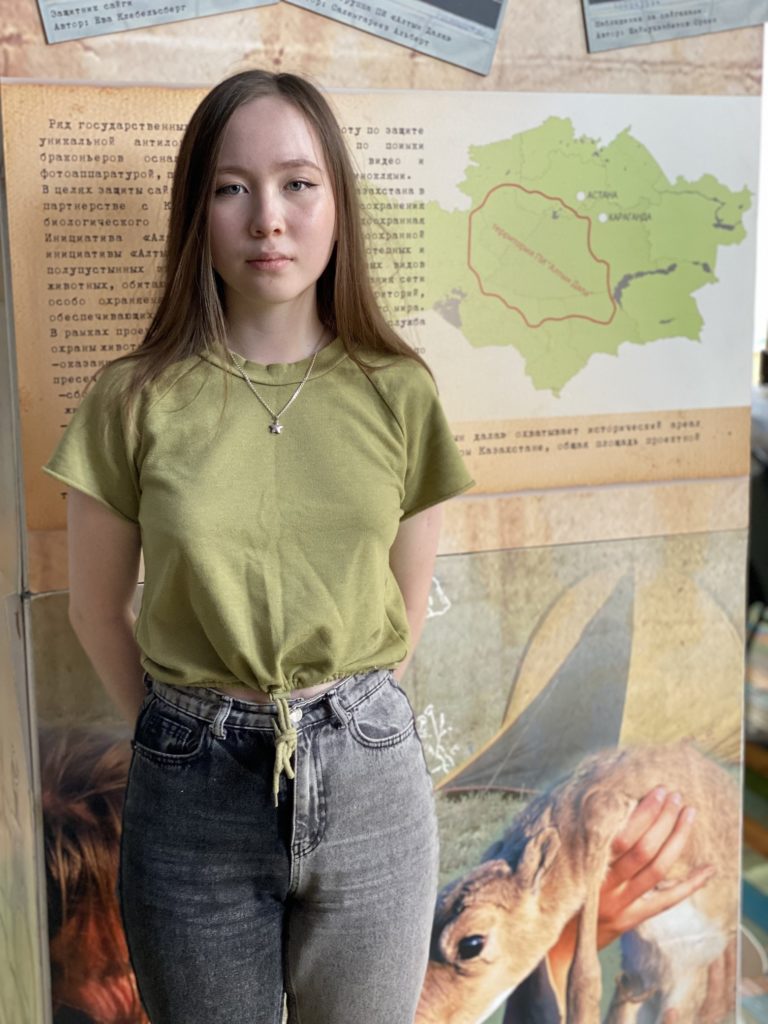
Ekaterina Berezina, Russia:
During my research, I plan to use photos from camera traps placed near the waterholes in the Stepnoi Reserve made during the last two years. I hope to broaden our understanding of the way saigas move around the sanctuary and use waterholes in their daily routine. Using information about the date and time of the visit and identifying the sex and age of the saigas will allow me to enrich the analysis of the daily behavior of these shy animals.
Photos provided by Ekaterina Berezina.

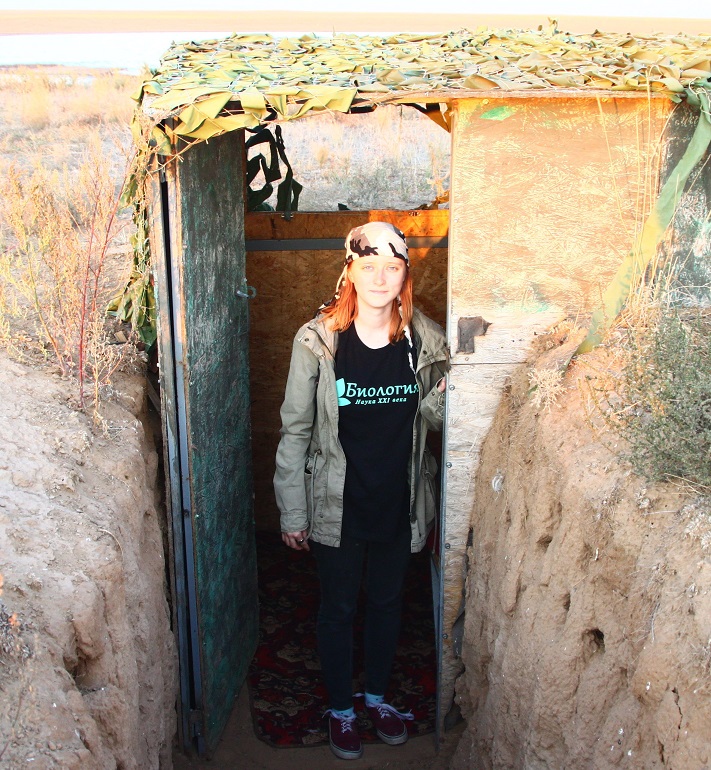
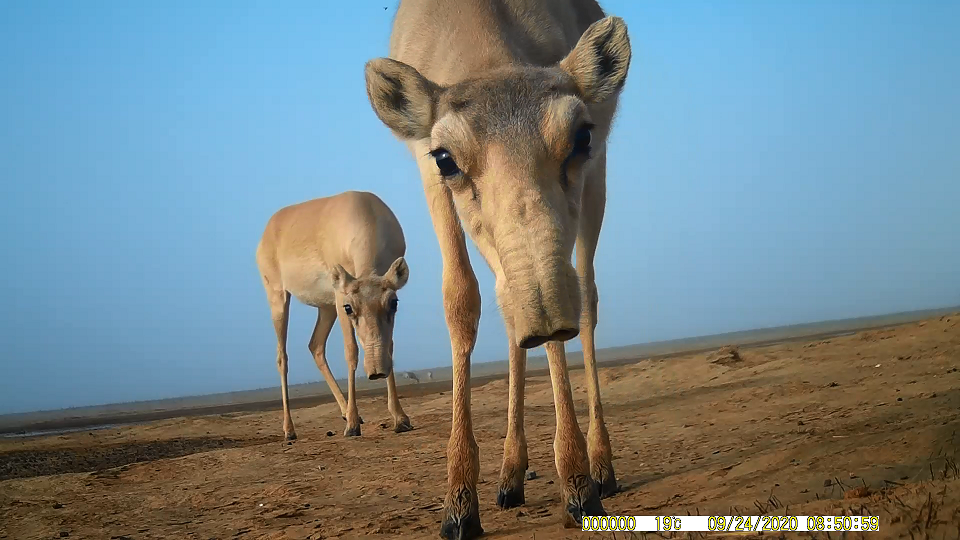
Excellence in Saiga Protection
Vladimir Kalmykov, Director of Stepnoi Reserve, Astrakhan region, Russia, winner of the Excellence in Saiga Protection 2021 award:
Being awarded the Alliance Award for Excellence in Saiga Protection in 2021, as a high assessment of my humble work in the protection and restoration of the saiga population in the North-West Caspian region, I regard as recognition to a greater extent of merit and appreciation of the very difficult and important work that the entire team of state inspectors of the Stepnoi Reserve does tirelessly. At the same time, I would also like to note that without constant attention and timely assistance provided to the Reserve by the Alliance, our work could not be so effective. The staff of the Reserve (and the saigas who have joined them) are sincerely grateful to Alliance for everything that has been done for over 15 years to preserve and revive the saiga throughout its range.
Photos
Team of Maksim Kulushev and Alexey Garagan, rangers in Committee of hunting and fishing of the Saratov region, Russia, “Highly commended” status within the Excellence in Saiga Protection 2021 award:
We are very pleased that our saiga conservation work has been appreciated. Holding such competitions is very important to draw attention to the problems of preserving the population of this animal. We believe that only together is it possible to preserve this rare and amazing species of animals.
Photos provided by Maksim Kulushev and Alexey Garagan.
